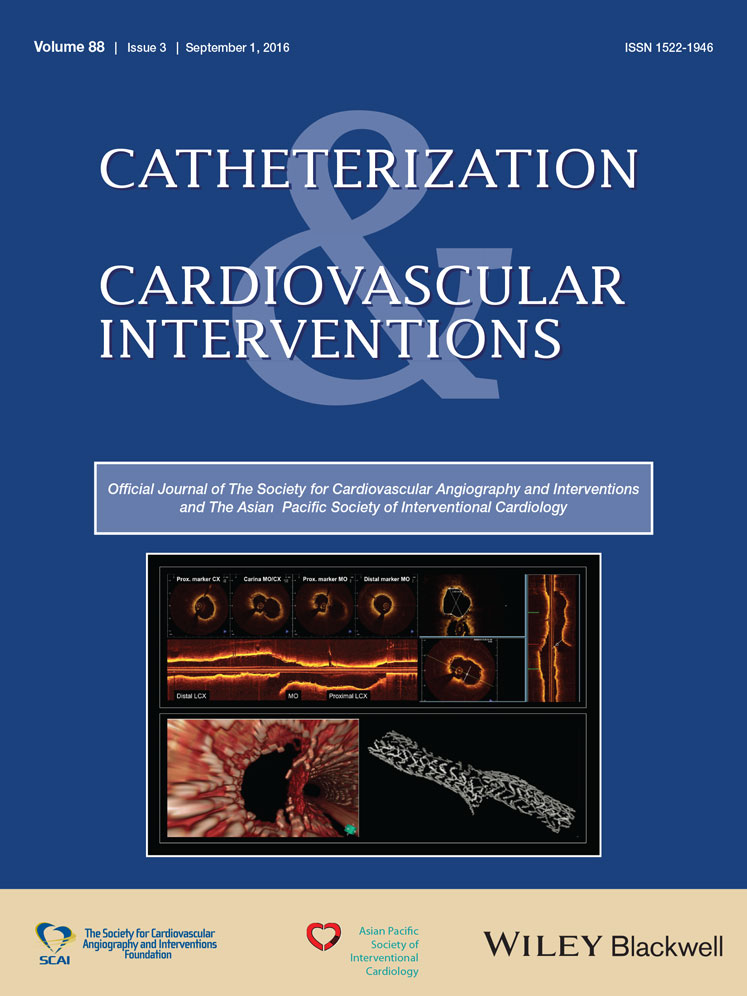Bioresorbable vascular scaffolds for small vessels coronary disease: The BVS-save registry
Conflict of interest: Nothing to report.
Abstract
Objective
In this study, we investigated long-term results following bioresorbable vascular scaffold (BVS) implantation in small coronary arteries.
Background
Management of small coronary vessel disease with percutaneous coronary interventions (PCI) is often associated with high recurrencies and an increased risk of late or very late adverse events. Currently, little is known about BVS behavior in this setting.
Methods
A retrospective cohort analysis in a consecutive all-comer population was performed in patients that had a BVS implanted for coronary artery disease (CAD) in vessels with reference diameter <2.75 mm. Primary end-point was the occurrence of BVS failure (any event between target lesion revascularization (TLR) and definite/probable thrombosis) at the longest available follow-up. Secondary end-points were device-oriented clinical outcome (DOCE, a composite of cardiac death, target-vessel non-fatal myocardial infarction (MI) and TLR) and its single components at 12-month follow-up.
Results
A total of 121 patients (133 lesions) were treated between March 2013 and December 2014 at three high volume Italian centers. From baseline clinical and angiographic characteristics emerges a highly complex patient population. Procedural success was obtained in 120 (99.2%) patients. In-hospital events included one cardiac death. At the longest available clinical follow-up (average 12 ± 6, median 11.4 months, interquartile ranges (IQR) 8, primary end-point occurred in 12 patients (9.0%), including 12 (9.0%) TLR and 2 (1.5%) BVS thrombosis. DOCE occurred in 9.0% of cases. The use of overlapping BVS in this setting did not increase the risk of adverse events.
Conclusions
BVS implantation in a highly complex clinical and angiographic setting of small coronary vessels was technically feasible and effective in maintaining vessel patency after 12 months. © 2016 Wiley Periodicals, Inc.




